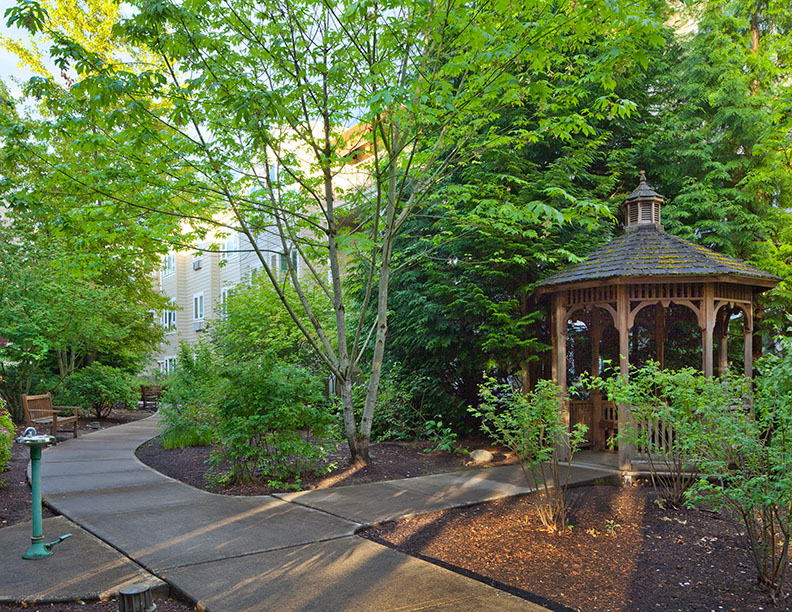By Sydney Clevenger
First impressions count, and that’s an adage especially true when searching for an elder living community.
To truly recognize a community as home, there are several elements one should experience when first walking through the door of an elder living facility, said Cedar Sinai Park Community Program Director Jennifer Felberg.
The first perception, said Felberg, should be the environment.
“Many of our visitors to Rose Schnitzer Manor immediately comment on the lightness and brightness and homey-ness of our active assisted living community, which sets the tone for the rest of the experience,” she said. “You want an environment that’s uplifting and warm, with small and large spaces for privacy, comfort, and personalization.”
To be known, have a sense of well-being and fulfillment, and to have a voice are essential tenets at Rose Schnitzer Manor Active Assisted Living, and those values should be felt walking through every beautiful space, said Felberg.
“People in a tight-knit community know one another, and are known by others,” she said. “If I were looking for a promising elder living community, I’d observe whether the leadership is visible. I’d also pay attention to whether staff smile and greet each other, which indicates they know and support one another, and are integral members of our community.”
Knowing each person is a core value of the Pioneer Network, a New York -based advocacy group championing a culture of aging in which individual voices are heard and choices are respected, no matter the environment.
“You want to see that residents and their home are honored and respected,” said Felberg. “Our community of residents should always feel comfortable not only in the privacy of their apartment, but in all of the public spaces, as well.
“Is there somewhere folks can look out the window at the beautiful gardens, visit over a cup of coffee in a comfy chair, or do a puzzle?” asked Felberg. “Group activities are important, too, but a fully engaged life is demonstrated by how people are choosing to spend their unstructured time, or have opportunities for spontaneity.”
Felberg said communities should strive to ensure elders feel like they belong, and are developing meaningful relationships with the people sharing their living environment.
“Look for whether residents and caregivers also are developing joyful connections,” she said. “Connections are what creates a culture of community, and the importance of a community’s culture cannot be underscored enough.”
Noticing whether a community is welcoming and whether there are people of all colors and nationalities and religions is another view to take when touring a community.
Added Felberg: “A welcoming, diverse community with the Jewish values of love, honor, and respect are the backbone of our culture of community, and it is a difference you can feel.”
###



